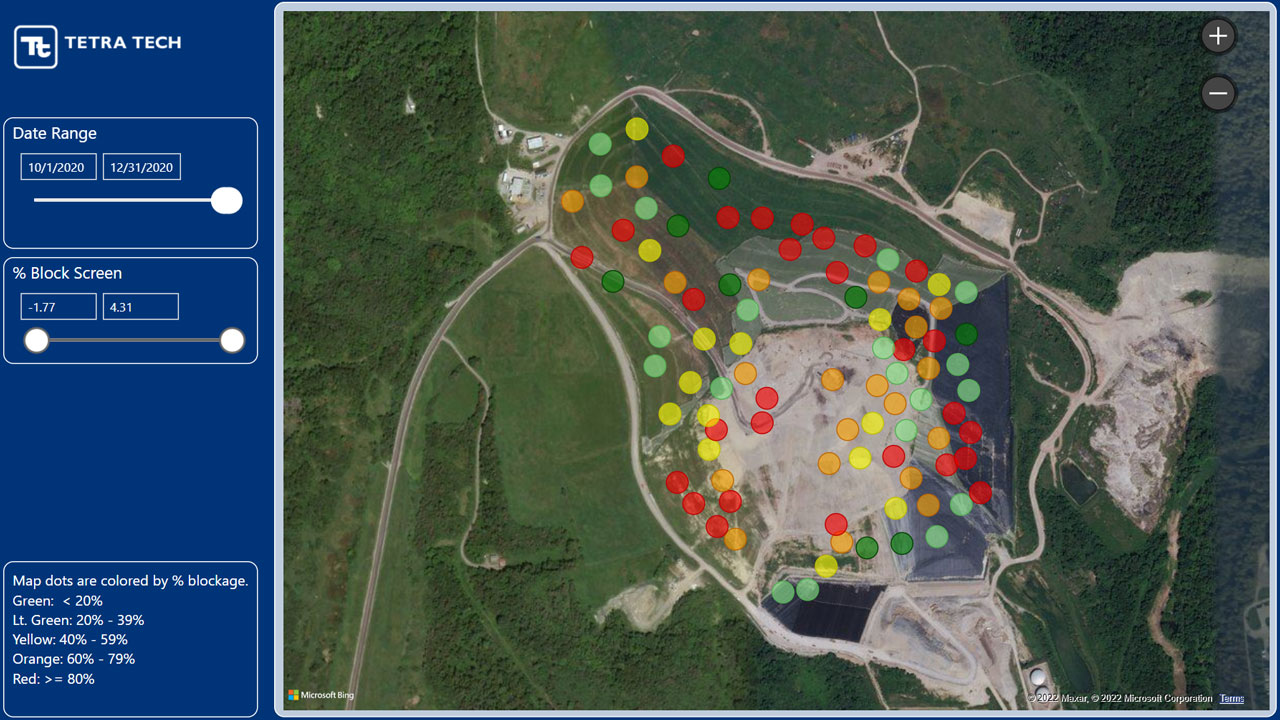
This article originally ran in Waste Advantage Magazine.
Managing data collected by field staff at landfills has always been a huge challenge. In the past, individual field technicians collected the data on paper and then submitted it to project managers or office staff, who had to aggregate and consolidate data from multiple technicians for multiple projects. Turnaround time for reviewing all the data collected was typically much slower than desirable.
Modern platforms provide highly adaptable features that can be configured for better data-driven systems tailored to specific needs regardless of the application. With these modern platforms available, the entire process from collection to reporting can be accomplished faster and more effectively with better data security and integrity.
Tetra Tech has developed new mobile landfill data collection tools that help stakeholders make quicker decisions. The new tools are used for mobile field data collection, real-time processing of large datasets, custom interactive dashboards, and cloud-based solutions. The new system was developed by a team of experienced waste management experts, analysts, and data scientists who leveraged our Tetra Tech Delta suite of proprietary technologies and analytical tools.
New landfill data collection tools include three business applications:
- Mobile data collection—Streamlined, mobile-friendly collection of field data and geotagged digital imagery
- Site asset management—Web-based portal for managing multiple sites, all classes of site assets, in situ data collection, users, security, and configuration
- Reporting and analytics—Seamless database integration of all data, automated report generation, analytics, maps, charts, and dashboards
New data collection systems used for a variety of landfill tasks
The flexible new data collection systems can be used for various landfill tasks, including fluid management analytics and heat maps, cover integrity inspections, and maintenance and repairs.
Landfills faced with high fluid levels—symptoms of which may include poor gas flow, slope stability issues, and higher temperatures—often want to collect and analyze fluid levels more frequently, identify key targets for fluid impact based on the data collected, and then implement a pump management program.
The first step in using the data collection system for fluid level management is to enter the well as-built information (e.g., lengths of perforated pipe, length of solid pipe) into the system as a baseline for fluid level calculations downstream. Technicians then measure fluid levels in the field and submit them via the mobile form. Calculations are performed in the database that drive two valuable outputs: the fluid level profile graph for visualizing measured fluid levels for a given well over a period of time (Figure 1) and the percent blocked screen map for visualizing any significant spatial pattern of high fluid levels in the landfill (Figure 2).


With these new tools, raw data is transformed to actionable information. Landfill site data collection systems offer a major improvement over what has traditionally been a time-consuming and tedious data transcription process. What was previously handwritten field data is now submitted via mobile tools for instant data processing, transformation, and analysis. End users now have access to that information in reports and dashboards in a matter of minutes instead of days.
About the authors
Aaron Weier
Aaron Weier, IT manager, has nearly 25 years of experience in developing, delivering, and supporting data-driven applications.
His work includes data development and management, geospatial data development and management, application development, GIS application development and support for desktop and web deliverables, 3D mapping, spatial analysis, and training.
David Sedlacko
David Sedlacko, database administrator, has more than 10 years of experience in the landfill gas industry.
He has led the development and management of Tetra Tech’s mobile data collection platform, as well as internal data management system, and works closely with project staff to align the use of the mobile data collection platform to meet project needs and provide data quality, process efficiency, and customer satisfaction.